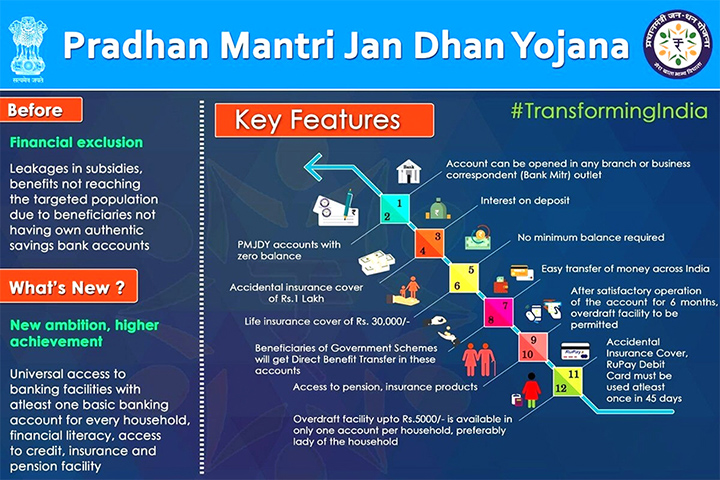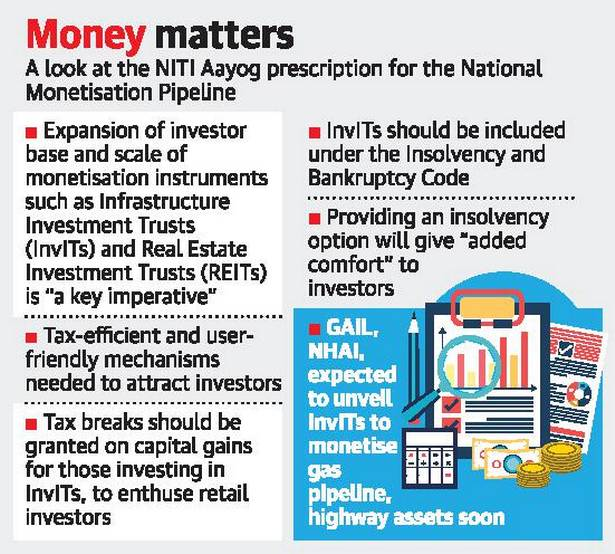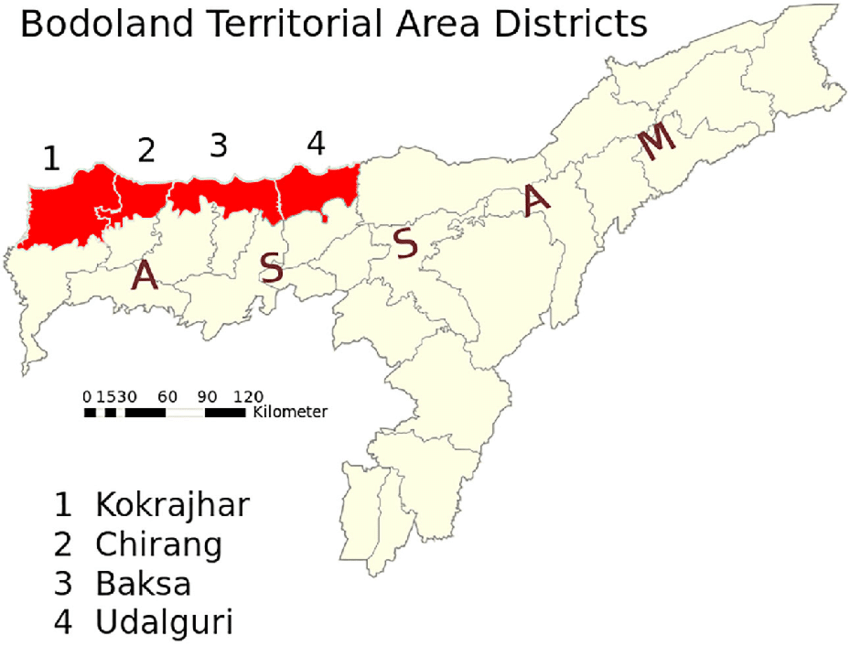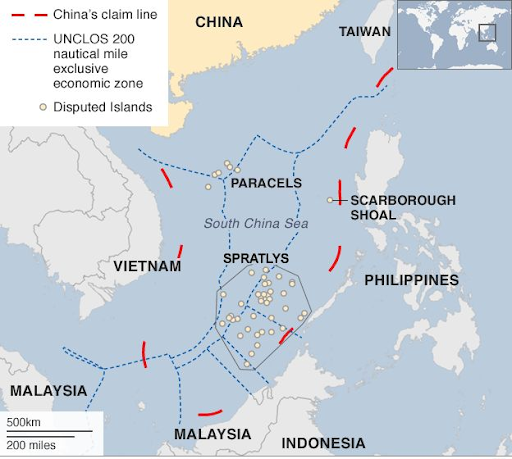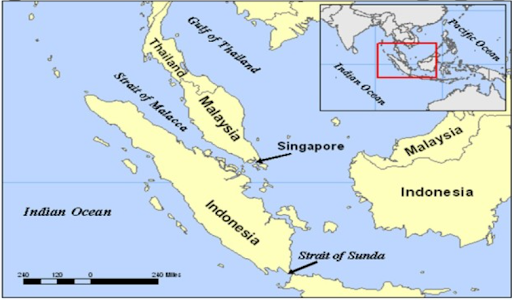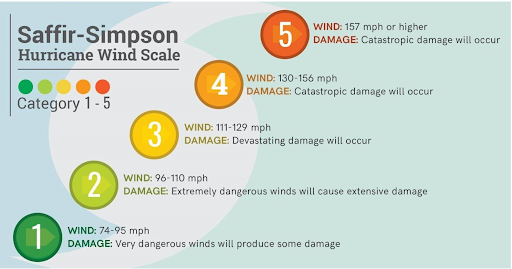Governance
Seven Years of Pradhan Mantri Jan Dhan Yojana
Why in News
Recently, the government has asked the banks to improve access of account holders in the Pradhan Mantri Jan Dhan Yojana (PMJDY) scheme to micro-credit and micro investment products, like flexi-recurring schemes.
- PMJDY - National Mission for Financial Inclusion has completed seven years of successful implementation.
Key Points
- Objective of PMJDY:
- Ensuring access to various financial services to the excluded sections i.e. weaker sections & low income groups at an affordable cost and using the technology for the same.
- Six Pillars of the Scheme:
- Universal Access to Banking Services – Branch and Banking Correspondents.
- Accounts opened are online accounts in the core banking system of banks.
- Focus has shifted from ‘Every Household’ to Every Unbanked Adult’.
- Basic Savings Bank Accounts with OverDraft (OD) Facility of Rs. 10,000/- to every household.
- Financial Literacy Program– Promoting savings, use of ATMs, using basic mobile phones for banking, etc.
- Creation of Credit Guarantee Fund – To provide banks some guarantee against defaults.
- Insurance – Free accidental insurance cover on RuPay cards increased from Rs. 1 lakh to Rs. 2 lakh for PMJDY accounts opened after August 2018.
- Pension Scheme for the Unorganized sector.
- Universal Access to Banking Services – Branch and Banking Correspondents.
- Achievements:
- Accounts:
- The number of accounts rose to 43.04 crore in August 2021 from 17.9 crore in August 2015.
- Of this, 55.47% Jan Dhan account holders are women and 66.69% holders are in rural and semi-urban areas.
- Deposits:
- The deposits have shot up to Rs. 1.46 lakh crore from Rs. 22,901 crore during 2015-2021.
- Operative Accounts:
- As per extant Reserve Bank of India guidelines, a PMJDY account is treated as inoperative if there are no customer induced transactions in the account for over a period of two years.
- In August 2021, out of total 43.04 crore PMJDY accounts, 36.86 crore (85.6%) were operative.
- Continuous increase in percentage of operative accounts is an indication that more and more of these accounts are being used by customers on a regular basis.
- As per extant Reserve Bank of India guidelines, a PMJDY account is treated as inoperative if there are no customer induced transactions in the account for over a period of two years.
- RuPay Usage:
- Number of RuPay cards & their usage has also increased over time.
- Jan Dhan Darshak App:
- This app is being used for identifying villages which are not served by banking touchpoints within 5 km. The efforts have resulted in a significant decrease in the number of such villages.
- Pradhan Mantri Garib Kalyan Package (PMGKP) for PMJDY Women:
- Under PMGKP, a total of Rs. 30,945 crore have been credited in accounts of women PMJDY account holders during Covid lockdown.
- Smooth DBT Transactions:
- About 5 crore PMJDY account holders receive Direct Benefit Transfer (DBT) from the Government under various schemes.
- Accounts:
- Impact:
- Increased Financial Inclusion:
- PMJDY has been the foundation stone for people-centric economic initiatives. Whether it is DBT, Covid-19 financial assistance, PM-KISAN, increased wages under MGNREGA, life and health insurance cover, the first step of all these initiatives is to provide every adult with a bank account, which PMJDY has nearly completed.
- Formalisation of Financial System:
- It provides an avenue to the poor for bringing their savings into the formal financial system, an avenue to remit money to their families in villages besides taking them out of the clutches of the usurious money lenders.
- Prevention of Leakage:
- DBTs via PM Jan Dhan accounts have ensured every rupee reaches its intended beneficiary and prevents systemic leakage.
- Increased Financial Inclusion:
- Challenges:
- Connectivity:
- Lack of physical and digital connectivity is posing a major hurdle in achieving financial inclusion for rural India.
- Technological Issue:
- The technological issues affecting banks from poor connectivity, networking and bandwidth problems to managing costs of maintaining infrastructure especially in rural areas.
- Procedure not Clear:
- Most of the people are aware but still so many are not turned around as they are not understanding the proper procedure of opening an account and required documents at a time.
- Connectivity:
Way Forward
- There must be an endeavour to ensure coverage of PMJDY account holders under micro insurance schemes.
- Eligible PMJDY account holders will be sought to be covered under Pradhan Mantri Jeevan Jyoti Bima Yojana (PMJJBY) and Pradhan Mantri Suraksha Bima Yojana (PMSBY).
- Promotion of digital payments including RuPay debit card usage amongst PMJDY account holders through creation of acceptance infrastructure across India.
Indian Economy
Critical Elements of National Monetisation Pipeline
Why in News
- Recently, the NITI Aayog has recommended bringing in policy and regulatory changes to scale up monetisation instruments like Infrastructure Investment Trusts (InvITs) and Real Estate Investment Trusts (REITs) as a critical element for success of the National Monetisation Pipeline (NMP).
Key Points
- About NMP:
- The NMP estimates aggregate monetisation potential of Rs 6 lakh crores through core assets of the Central Government, over a four-year period, from FY 2022 to FY 2025.
- The plan is in line with Prime Minister's strategic divestment policy, under which the government will retain presence in only a few identified areas with the rest tapping the private sector.
- Under it, the government plans to use the InvITs and REITs route to monetise public assets like highways, gas pipelines, railway tracks and power transmission lines.
- Highlights of the NITI Aayog Recommendations:
- Bringing InvITs Under Insolvency and Bankruptcy Code (IBC): While InvITs structures have been used in India since 2014, such Trusts are not considered a 'legal person'.
- Therefore, the IBC regulations are not applicable for InvIT loans. The lenders do not have an existing process for recourse to project assets.
- However, lenders are protected under the Securitisation and Reconstruction of Financial Assets and Enforcement of Security Interest Act, 2002 (SARFAESI Act) and the Recovery of Debts and Bankruptcy Act, 1993
- Thus, extending IBC provisions to InvITs would help lenders access a faster and more effective debt restructuring and resolution option.
- Therefore, the IBC regulations are not applicable for InvIT loans. The lenders do not have an existing process for recourse to project assets.
- Tax Breaks: Tax-efficient and user-friendly mechanisms like allowing tax benefits in InvITs as eligible security to invest under Section 54EC of the Income-Tax Act, 1961, would attract retail investors (individual/non-professional investors).
- Though this will entail a cost in the form of loss of revenue for the exchequer, the long-term benefits may outweigh the cost as linking investments in specified bonds with the capital gains exemption had proved to be a success in the past.
- Section 54EC of the Income-Tax Act, 1961, allows taxpayers to offset long-term capital gains from transactions in immovable properties through investments in bonds issued by some government-backed infrastructure firms.
- This applies to bonds issued by the National Highway Authority of India, Rural Electrification Corporation, Power Finance Corporation and the Indian Railway Finance Corporation.
- Bringing InvITs Under Insolvency and Bankruptcy Code (IBC): While InvITs structures have been used in India since 2014, such Trusts are not considered a 'legal person'.
- About Infrastructure Investment Trusts:
- They are instruments that work like mutual funds.
- They are designed to pool small sums of money from a number of investors to invest in assets that give cash flow over a period of time. Part of this cash flow would be distributed as a dividend back to investors.
- The minimum investment amount in an InvIT Initial Public Offering (IPO) is
Rs 1 lakh, therefore, InvITs are suitable for high networth individuals, institutional and non-institutional investors.
- InvITs are listed on exchanges just like stocks — through IPOs.
- InvITs are regulated by the Securities and Exchange Board of India (SEBI) (Infrastructure Investment Trusts) Regulations, 2014.
- InvITs are structured so as to give investors an opportunity to invest in infrastructure assets with predictable cash flows, while the asset owners can raise upfront resources against future revenue cash flows from those assets, which in turn can be deployed in new assets or used to repay debt.
- About Real estate Investment Trust:
- ReITs are similar to InvITs, with a difference that these securities are linked to real estate.
- The structure of ReITs is similar to that of a mutual fund. However, unlike mutual funds, where the underlying asset is bonds, stocks and gold, ReITs invest in physical real estate.
- The money collected is deployed in income-generating real estate.
- This income gets distributed among the unit holders.
- Besides regular income from rents and leases, gains from capital appreciation of real estate also form an income for the unit holders.
- The minimum subscription limit for ReITs is Rs 50,000.
Way Forward
- Multi-stakeholder Approach: Infrastructure regulators and SEBI would need to work in tandem for a successful insolvency resolution of an InvITs which may involve a change in the sponsor, investment manager and/ or trustee or transfer of an infrastructure asset.
- Amendment in Income Tax Act: Industrial groups have proposed a separate section in the income tax law to provide capital gains tax relief for investments in eligible InvITs specifically holding NMP assets, which would be better than extending Section 54EC.
- Holistic Reforms: Streamlining operational modalities, encouraging investor participation and facilitating commercial efficiency’ could ensure ‘efficient and effective’ outcomes from the monetisation drive.
Internal Security
Bodoland Territorial Region (BTR)
Why in News
The people displaced by ethnic and communal riots in areas under the Bodoland Territorial Region (BTR) since 1996 are set to return to the homes they left behind.
- The Ministry of Home Affairs (MHA), the Assam government and the Bodo groups signed a tripartite agreement to redraw, rename and change power-sharing agreement in the Bodoland Territorial Area District (BTAD) in Assam.
Key Points
- About:
- Population: Bodos are the single largest community among the notified Scheduled Tribes in Assam. They constitute about 5-6% of Assam’s population.
- Kokrajhar, Baksa, Udalguri and Chirang districts in Assam constitute the Bodo Territorial Area District (BTAD) and are home to several ethnic groups.
- Population: Bodos are the single largest community among the notified Scheduled Tribes in Assam. They constitute about 5-6% of Assam’s population.
- Dispute:
- Demand of Separate State: The first organised demand for a Bodo state came in 1967-68 under the banner of the political party called Plains Tribals Council of Assam.
- Assam Accord: In 1985, when the Assam Movement culminated in the Assam Accord, many Bodos saw it as essentially focusing on the interests of the Assamese-speaking community.
- As a result of this, several Bodo groups led by the All Bodo Students Union (ABSU) and National Democratic Front of Bodoland have been demanding separate land for the ethnic community, a movement that has claimed nearly 4,000 lives.
- Displacement of People: Between 1993 and 2014, more than 970 Bengali-speaking Muslims, Adivasis and Bodos died in clashes triggered by indiscriminate shooting by extremist groups, primarily the now-disbanded National Democratic Front of Bodoland (NDFB).
- Some of the 8.4 lakh people displaced by the violence have remained in shabby relief camps while others relocated to areas beyond present-day BTR. Over 2.5 lakh people were displaced in the Bodo-Santhal conflict.
- Bodo Accord:
- First Bodo Accord: After years of violent clashes, the first Bodo Accord was signed with the ABSU in 1993, leading to the creation of a Bodoland Autonomous Council with limited political powers.
- Second Bodo Accord: Under this, it was agreed to create a self-governing body for the Bodo Areas in the State of Assam.
- In pursuance of this, the Bodoland Territorial Council (BTC) was created in 2003 with some more financial and other powers.
- Third Bodo Accord: The agreement was signed in 2020, it renamed the BTAD as Bodoland Territorial Region (BTR).
- It promises more legislative, executive and administrative autonomy under the Sixth Schedule to Bodoland Territorial Council (BTC) and expansion of the BTC territory in lieu of statehood.
- It provides for alteration of the area of BTAD and provisions for Bodos outside BTAD.
- BTR includes the villages which are dominated by Bodos but are outside BTAD presently.
Bodoland Territorial Council (BTC)
- It is an autonomous region in the state of Assam in India.
- It is made up of four districts (Kokrajhar, Chirang, Baksa and Udalguri) on the north bank of the Brahmaputra river, by the foothills of Bhutan and Arunachal Pradesh.
- The area under the jurisdiction of BTC, formed under the 2003 Accord, was called the Bodo Territorial Autonomous District (BTAD).
- BTC is an area governed under the 6th schedule. However, BTC is an exception to the constitutional provision under the 6th schedule.
- As it can constitute up to 46 members out of which 40 are elected.
- Of these 40 seats, 35 are reserved for the Scheduled Tribes and non-tribal communities, five are unreserved and the rest six are nominated by the governor from underrepresented communities of the BTAD.
Autonomous Districts and Regional Councils
- Along with ADCs, the Sixth Schedule also provides for separate Regional Councils for each area constituted as an autonomous region.
- In all, there are 10 areas in the Northeast that are registered as autonomous districts – three in Assam, Meghalaya and Mizoram and one in Tripura.
- These regions are named as district council of (name of district) and regional council of (name of region).
- Each autonomous district and regional council consists of not more than 30 members, of which four are nominated by the governor and the rest via elections.
- All of them remain in power for a term of five years.
International Relations
China’s New Maritime Regulations for Foreign Ships
Why in News
Recently, China has notified new maritime rules, warranting vessels to report their information when passing through what China sees as its “Territorial Waters”, that will take effect from 1st September 2021.
- China claims under a so-called “Nine Dash Line” on its maps most of the South China Sea’s waters, which are disputed by several other countries, including the Philippines, Vietnam, Malaysia and Indonesia.
Key Points
- About:
- Operators of submersibles, nuclear vessels, ships carrying radioactive materials and ships carrying bulk oil, chemicals, liquefied gas and other toxic and harmful substances that may endanger the maritime traffic safety of China are required to report their detailed information upon their visits to Chinese territorial waters.
- China claims almost all of the 1.3 million square-mile South China Sea as its sovereign territory. It has been building military bases on artificial islands in the region.
- It is seen as a sign of stepped-up efforts to safeguard China's national security at sea by implementing strict rules to boost maritime identification capability.
- China sees the US’ incursion into the region is of assertive nature that can be the biggest destroyer of peace and stability in the region.
- Operators of submersibles, nuclear vessels, ships carrying radioactive materials and ships carrying bulk oil, chemicals, liquefied gas and other toxic and harmful substances that may endanger the maritime traffic safety of China are required to report their detailed information upon their visits to Chinese territorial waters.
- Implications:
- Impact on Navigation and Trade:
- Indian commercial vessels as well as ships of the Indian Navy regularly traverse the waters of the South China Sea, through which pass key international sea lanes.
- Peace and stability in the region is of great significance to India. India undertakes various activities, including cooperation in the oil and gas sector, with the Littoral States of South China Sea.
- Over $5 trillion trade passes through the South China Sea, and 55% of India’s trade passes through its waters and the Malacca Straits.
- Inconsistent with International Law:
- It is seen as being inconsistent with the United Nations Convention on the Law of the Sea (UNCLOS), which states that ships of all countries “enjoy the right of innocent passage through the territorial sea”.
- Regional Turbulence:
- The new rules are expected to increase tensions if China strictly enforces them in the disputed South China Sea and the Taiwan straits where the US and its allies have been conducting naval expeditions, challenging Beijing’s claims to assert the freedom of navigation.
- Impact on Navigation and Trade:
- Nine Dash Line:
- Stretches hundreds of kilometers south and east of China’s southerly Hainan Island, covering the strategic Paracel and Spratly island chains.
- It is deemed by most countries as being inconsistent with the UNCLOS, which only gives states the right to establish a territorial sea up to 12 nautical miles.
- China claims it by citing 2,000 years of history when the two island chains were regarded as its integral parts.
- The Hague-based Permanent Court of Arbitration issued a decision in 2016, rejecting China’s claims as lacking a basis in international law. China dismissed the ruling then.
- Stretches hundreds of kilometers south and east of China’s southerly Hainan Island, covering the strategic Paracel and Spratly island chains.
United Nations Convention on the Law of the Sea
- The ‘Law of the Sea Treaty’, formally known as the UNCLOS was adopted in 1982 to establish jurisdictional limits over the ocean areas.
- The convention defines distance of 12 nautical miles from the baseline as Territorial Sea limit and a distance of 200 nautical miles distance as Exclusive Economic Zone limit.
- India became a signatory to the UNCLOS in 1982.
South China Sea
- The South China Sea is an arm of western Pacific Ocean in Southeast Asia.
- It is south of China, east & south of Vietnam, west of the Philippines and north of the island of Borneo.
- Bordering states & territories (clockwise from north): the People’s Republic of China, the Republic of China (Taiwan), the Philippines, Malaysia, Brunei, Indonesia, Singapore and Vietnam.
- It is connected by Taiwan Strait with the East China Sea and by Luzon Strait with the Philippine Sea.
- It contains numerous shoals, reefs, atolls and islands. The Paracel Islands, the Spratly Islands and the Scarborough Shoal are the most important.
Strait of Malacca
- It is a waterway that connects the Andaman Sea (Indian Ocean) and the South China Sea (Pacific Ocean).
- It runs between the Indonesian island of Sumatra to the west and peninsular (West) Malaysia and extreme southern Thailand to the east and has an area of about 25,000 square miles.
- The strait derived its name from the trading port of Melaka (formerly Malacca)—which was of importance in the 16th and 17th centuries—on the Malay coast.
Biodiversity & Environment
Hydropower Projects in Himalayas
Why in News
Recently, the central government has said that no new Hydropower projects would be allowed in the upper reaches of the Ganga and those sanctioned would have to abide by environment regulations that prescribe a minimum flow in the river at all times of the year to preserve its health.
Key Points
- About:
- Seven projects, all in Uttarakhand, have been allowed to complete construction primarily on the ground that they were over 50% complete.
- The seven projects are the:
- Tehri Stage 2: 1000 MW on Bhagirathi river
- Tapovan Vishnugadh: 520 MW on Dhauliganga river
- Vishnugadh Pipalkoti: 444 MW on Alaknanda river
- Singoli Bhatwari: 99 MW on Mandakini river
- Phata Bhuyang: 76 MW on Mandakini river
- Madhyamaheshwar: 15 MW on Madhyamaheshwar Ganga
- Kaliganga 2: 6 MW on Kaliganga river
- Issues:
- Activists have raised concerns that two projects, Singoli Bhatwari and Phata Bhuyang, which were specifically linked to the Kedarnath Tragedy (2013) have been allowed.
- The Vishnugadh project damaged in the February 2021 Floods too has been allowed to progress even though 200 plus people died due to the criminal negligence of there not being a Disaster Warning System.
- Hydropower projects, dams and construction activities are affecting the fragile Himalayan region making them susceptible to disasters.
- Challenges to Hydropower Projects in Himalayas:
- Decreasing Stability:
- Glacier retreat and Permafrost Thaw are projected to decrease the stability of mountain slopes and increase the number and area of glacier lakes.
- Permafrost Thawing is the release of the powerful greenhouse gas methane into the atmosphere, which contributes to further warming in a reinforcing feedback loop.
- Glacier retreat and Permafrost Thaw are projected to decrease the stability of mountain slopes and increase the number and area of glacier lakes.
- Climate Change:
- Climate change has driven erratic weather patterns like increased snowfall and rainfall.
- The thermal profile of ice is increasing, which means that the temperature of ice that used to range from -6 to -20 degree C, Is now -2 degree C, making it more susceptible to melting.
- Increase in Calamitic Instances:
- With increased instances of cloudbursts, and intense spells of rainfall and avalanches, residents of the region are also placed at increased risk of loss of lives and livelihood.
- Decreasing Stability:
- Initiative Taken:
- National Mission on Sustaining Himalayan Ecosystem (NMSHE) is one of the eight missions under the National Action Plan on Climate Change (NAPCC). The mandate is to evolve measures to sustain and safeguard the Himalayan glaciers, mountain ecosystems, biodiversity and wildlife conservation & protection.
Way Forward
- It is recommended that there should be no hydropower development beyond an elevation of 2,200 metre in the Himalayan region.
- Considering population growth and required industrial and infrastructure growth, the government should be serious in development of hydro power which is essential for the sustainable growth of the economy, but in a more ecological manner.
Indian Economy
e-Shram Portal
Why in News
Recently, the Ministry of Labour and Employment launched the e-Shram portal.
Key Points
- About e-Shram Portal:
- Aim: To register 38 crore unorganised workers such as construction labourers, migrant workforce, street vendors, and domestic workers, among others.
- The workers will be issued an e-Shram card containing a 12 digit unique number.
- If a worker is registered on the eSHRAM portal and meets with an accident, he will be eligible for Rs 2.0 Lakh on death or permanent disability and Rs 1.0 lakh on partial disability.
- Background: The formation of e-Shram portal came after the Supreme Court directed the Government to complete the registration process of unorganized workers so that they can avail the welfare benefits given under various government schemes.
- Implementation: Government in States/UTs will conduct registration of unorganised workers across the country.
- Aim: To register 38 crore unorganised workers such as construction labourers, migrant workforce, street vendors, and domestic workers, among others.
- Status of Unorganised Sector in India:
- The Ministry of Labour and Employment has categorized the unorganized labour force under four groups:
- Occupation:
- Small and marginal farmers, landless agricultural labourers, sharecroppers, fishermen, those engaged in animal husbandry, beedi making, etc.
- Nature of Employment:
- Attached agricultural labourers, bonded labourers, migrant workers, contract and casual labourers come under this category.
- Specially Distressed Category:
- Toddy tappers, scavengers, carriers of head loads, drivers of animal driven vehicles, loaders and unloaders.
- Service Category:
- Midwives, Domestic workers, Fishermen and women, Barbers, Vegetable and fruit vendors, News paper vendors etc.
- Occupation:
- According to the Periodic Labour Force Survey (PLFS 2018-19), 90% of workers were in the informal sector, which is 419 million of the 465 million workers.
- Informal workers in rural and urban areas have been hit the most due to the pandemic, because of the seasonality of their employment and lack of formal employee-employer relationship.
- The Ministry of Labour and Employment has categorized the unorganized labour force under four groups:
- Initiatives Already Taken to Support Unorganised Sector:
- Pradhan Mantri Shram Yogi Maan-dhan (PM-SYM)
- Labour Code
- Pradhan Mantri Rojgar Protsahan Yojana (PMRPY)
- PM SVANidhi: Micro Credit Scheme for Street Vendors
- Atmanirbhar Bharat Abhiyan
- Deendayal Antyodaya Yojana National Urban Livelihoods Mission
- PM Garib Kalyan Ann Yojana (PMGKAY)
- One Nation One Ration Card
- Atmanirbhar Bharat Rozgar Yojana
- Pradhan Mantri Kisan Samman Nidhi
- World Bank Support to India’s Informal Working Class
Important Facts For Prelims
Hurricane Ida
Why in News
Recently, Hurricane Ida made landfall in Louisiana, US. It is an extremely dangerous Category 4 storm and one of the most powerful storms ever to hit the US.
- It will test the hundreds of miles of new levees that were built after the devastation of Hurricane Katrina (2005), which made landfall 16 years ago in the US.
Key Points
- About: Hurricanes are the biggest and most violent storms on the planet.
- Tropical cyclones or hurricanes use warm, moist air as fuel, and therefore form over warm Equatorial water.
- Mechanism:
- When the warm, moist air rises upward from the surface of the ocean, it creates an area of low air pressure below.
- When this happens, the air from the surrounding areas rushes to fill this place, eventually rising when it becomes warm and moist too.
- An eye forms in the centre. It is the calmest part of the cyclone. Before the wind reaches the centre it gets warmed up and rises upwards.
- When the warm air rises and cools off, the moisture forms clouds. This system of clouds and winds continues to grow and spin.
- This disturbance is fuelled by the ocean’s heat and the water that evaporates from its surface.
- Such storm systems rotate faster and faster.
- Storms that form towards the north of the equator rotate counterclockwise, while those that form to the south spin clockwise because of the rotation of the Earth.
- Names in Different Regions of the World:
- Typhoons: Tropical cyclones are known as Typhoons in the China Sea and Pacific Ocean.
- Hurricanes: In the West Indian islands in the Caribbean Sea and Atlantic Ocean.
- Willy-willies: In north-western Australia and
- Tropical Cyclones: In the Indian Ocean Region.
- Categorization of Hurricanes:
- Hurricanes are categorized on the Saffir-Simpson Hurricane Wind Scale, which rates them on a scale of 1 to 5 based on wind speed.
- Hurricanes that reach category three or higher are classified as major hurricanes.
Important Facts For Prelims
ICGS Vigraha
Why in News
The Offshore Patrol Vessel (OPV) Indian Coast Guard Ship (ICGS) Vigraha was commissioned into the Indian Coast Guard (ICG).
- It is the last vessel in the series of seven OPVs built by Larsen & Toubro (Private Company) under an Ministry of Defence contract signed in 2015.
- In May 2021, OPV Sajag was commissioned into the ICG.
Key Points
- About:
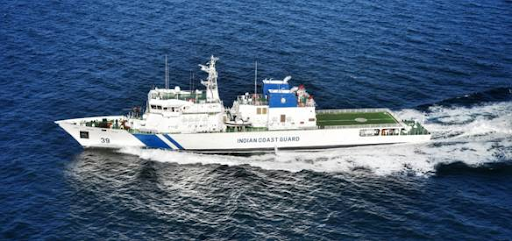
- It is about 98 metres long, 15 metres wide, has 3.6 metres draught, with 2,140 tonnes displacement and a range of 5,000 nautical miles.
- It can attain a sustained speed of up to 26 knots.
- It is fitted with advanced technology radars, navigation & communication equipment, sensors and machinery capable of operating in tropical sea conditions.
- It is also equipped with an integrated bridge system, integrated platform management system, automated power management system and high-power external fire-fighting system.
- It is armed with a 40/60 Bofors gun and fitted with two 12.7 mm Stabilised Remote Control Gun with fire control system.
- Special Capability:
- To carry one twin-engine Helicopter and four high speed boats for boarding operation, search & rescue, law enforcement and maritime patrol.
- Capable of carrying pollution response equipment to contain oil spills at sea.
- Offshore Patrol Vehicles:
- OPVs are long-range surface ships, capable of operation in maritime zones of India, including island territories with helicopter operation capabilities.
- Their roles include coastal and offshore patrolling, policing maritime zones of India, control and surveillance, anti-smuggling and anti-piracy operations with limited wartime roles.
Indian Coast Guard
- It is an Armed Force, Search and Rescue and Maritime Law Enforcement agency under the Ministry of Defence. It is headquartered in New Delhi.
- It was established in August 1978 by the Coast Guard Act, 1978 as an independent Armed force of India.
- The concept of forming ICG came into being after the 1971 war. The blueprint for a multidimensional Coast Guard was conceived by the visionary Rustamji Committee.
- It has jurisdiction over the territorial waters of India including contiguous zone and Exclusive Economic Zone (EEZ).
- It is responsible for marine environment protection in maritime zones of India and is coordinating authority for response to oil spills in Indian waters.
Important Facts For Prelims
SVEEP: ECI
Why in News
Recently, the Election Commission of India (ECI) organized a two-day SVEEP (Systematic Voters’ Education and Electoral Participation) Consultation Workshop.
Key Points
- SVEEP:
- Started in 2009, as the flagship program of the ECI for voter education.
- Primary goal is to build an inclusive & participative democracy by encouraging all eligible citizens to vote and make an informed decision & ethical choice.
- Other Related Initiatives Taken:
- NOTA (None of the Above) Option:
- By choosing NOTA, voters have the right to not to choose any nominated candidate.
- Voter Verified Paper Audit Trail:
- It is an independent verification printer machine and is attached to electronic voting machines. It allows voters to verify if their vote has gone to the intended candidate.
- National Voters’ Day:
- It has been celebrated on 25th January every year since 2011 to mark the formation of ECI.
- Decriminalization of Elections:
- ECI and the Court have ensured together that the candidates declare their criminal record and any cases, pending or not.
- cVIGIL App:
- This app provides time-stamped, evidence-based proof of the Model Code of Conduct/Expenditure Violation, having live photo/video with auto location data.
- NOTA (None of the Above) Option:
Election Commission of India
- An autonomous constitutional authority responsible for administering Union and State election processes in India.
- Administers elections to the Lok Sabha, Rajya Sabha, and State Legislative Assemblies and the offices of the President and Vice President.
- Part XV of the Indian constitution deals with elections, and establishes a commission for these matters.
- Article 324 to 329 of the constitution deals with powers, function, tenure, eligibility, etc of the commission and the members.
- Originally, it had only one election commissioner but after the Election Commissioner Amendment Act 1989, it has been made a multi-member body.
- Presently, it consists of one Chief Election Commissioner (CEC) and two Election Commissioners (ECs) - appointed by the President.
- They hold office for a term of 6 years or until they attain the age of 65 years, whichever is earlier.

